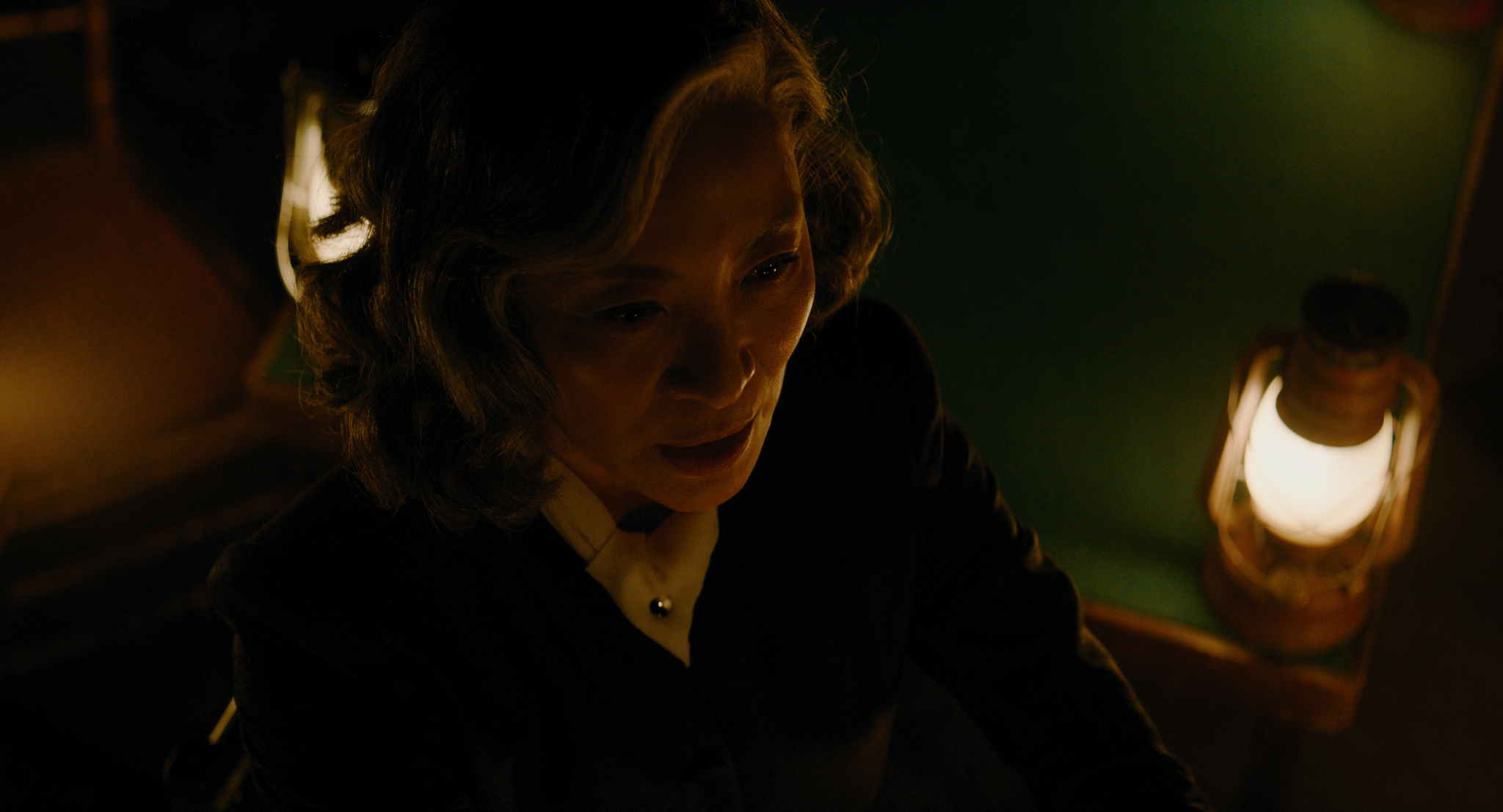A HAUNTING IN VENICE. Hercule Poirot in a Haunted House

Everyone has their own demons, both real ones lurking in dark corners and those deep in the soul, equally dangerous because you can’t escape from them. This is the main theme of Kenneth Branagh’s new film, and to present this topic interestingly on screen, screenwriter Michael Green and the director brought to life characters from Agatha Christie’s novel Hallowe’en Party (1969) and stylistically referenced gothic horror tales of haunted houses. As a result, a very successful combination of detective crime – a genre inherently rational – with supernatural horror was created.
I intentionally wrote above “brought to life characters from the novel” instead of “adapted the book’s plot” because the plot in the film significantly differs from the literary original. The creators didn’t limit themselves to just moving the action from the suburban village of Woodleigh Common to Venice but created a new intellectual challenge for the famous Belgian detective. The starting point is similar – Poirot (Kenneth Branagh) is approached by his friend Ariadne Oliver (Tina Fey), a popular crime novelist. As befits a writer, she has a huge imagination and can find 12 solutions to one problem. Unlike Poirot, who can choose one of these 12 because with crime, it’s like mathematics – only one solution is correct. As Agatha Christie put it in her book, Hercule Poirot is like a computer because he gathers information all day to get a result at the end.

Mrs. Reynolds (Michelle Yeoh), a character who in the novel was the victim’s mother, plays a completely different role here. She is a medium invited to a Halloween party to conduct a seance. Ariadne Oliver would like to expose her as a fraud and therefore seeks the help of the famous Belgian detective. During the party, not only do incredible events related to spiritualism occur, but also what crime fans like the most – a mysterious murder. In the meantime, the detective himself almost dies when he tries to test his cunning in a children’s game – biting apples floating in water. The beauty of Venetian architecture is replaced by the gloomy interior of a supposedly haunted house. This can be compared to the situation described in the literary original when a juicy, red apple is bitten, and suddenly a worm comes out of the flesh. And the same goes for people – beneath their elegant costumes, demons hide.
Watching how the logical mind of the Belgian detective copes with phenomena beyond common sense is a pleasure (at least for the person writing these words). And what may be a controversial statement – it is much more enjoyable than reading Hallowe’en Party, one of Agatha Christie’s weakest works in my opinion. The film’s creators found a great idea for this adaptation. Moving the action to Venice is cleverly thought out, as evidenced by the words addressed to Poirot: “Venice – a magnificent relic slowly sinking into the sea, just like your mind without a challenge.” The timing is also well used – Halloween – which gave the director a pretext to create a gothic horror atmosphere, something new in Agatha Christie’s world (although it wasn’t new for Branagh – 30 years earlier, he directed Frankenstein based on Mary Shelley’s prose). It is also no coincidence that the action takes place shortly after World War II – the presence of ghosts can be interpreted as symptoms of post-traumatic stress.

The main character’s words are significant: “Please understand, madam – I will embrace any honest sign of the devil, demon, or spirit with open arms. Because if there is a spirit, there is a soul. If there is a soul, there is a God who created it. And if we have God, we have everything. Meaning, order, justice. But I have seen too much of the world. Countless crimes. Two wars. The bitter evil of human indifference, and I come to the conclusion that no. No God, no spirits, no mediums to speak with them.”
Regarding crime dramas in the style of whodunit, there is a problem that the entire plot serves only the surprise ending about the identity of the perpetrator. And that’s exactly how it is with the literary original, dominated by dialogue with a large number of repetitions and a noticeable “fatigue of material.” In Michael Green’s script, however, tension grows with each passing minute because the dialogues do not tire the viewer, making the mystery even more interesting, and the ending is awaited with hope for something more than just the answer to the question “who killed?”. And the filmmakers do not disappoint – Hercule Poirot has psychological depth here, and therefore the challenge he has undertaken does not leave his (rather his soul) unaffected.

In connection with this film, Agatha Christie’s novel received a new edition, titled the same as the film and featuring an introduction by the screenwriter, Michael Green. He explained why he chose this particular book and why he departed so far from the source material. Regardless of his reasons, the end result is satisfying and, contrary to appearances, treats the queen of crime’s work with respect, demonstrating its timelessness and universality, pointing to the enormous potential for various interpretations. A Haunting in Venice is a film that has already divided foreign critics and will undoubtedly divide the audience, as is often the case with adaptations of literary classics. In my opinion, this work wins over other whodunit films because its strength is not only based on the criminal plot with a surprising ending but also on a solidly created atmosphere of horror, making it a film not for one-time use.

